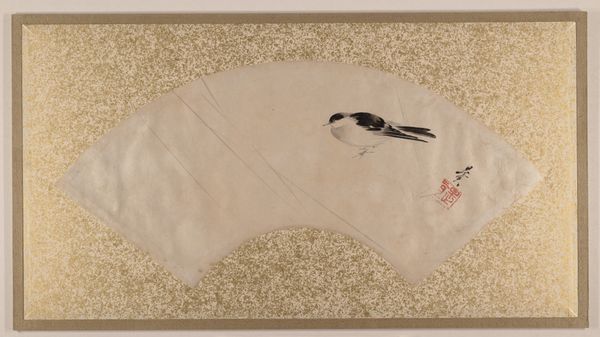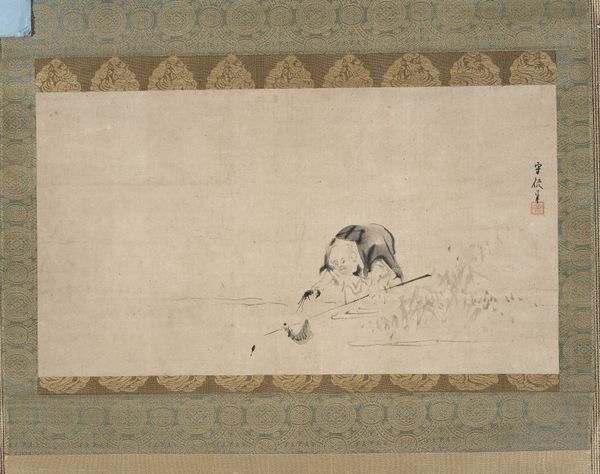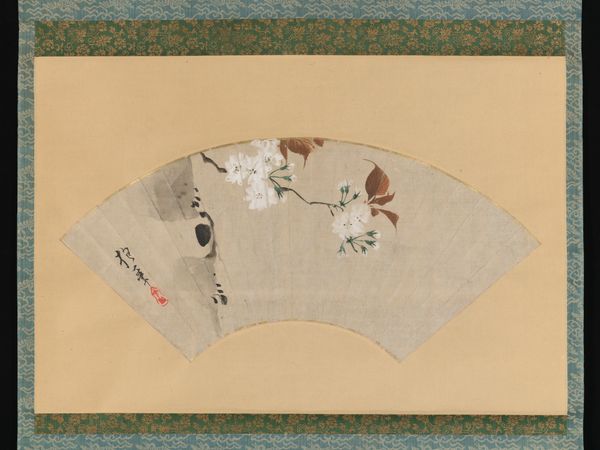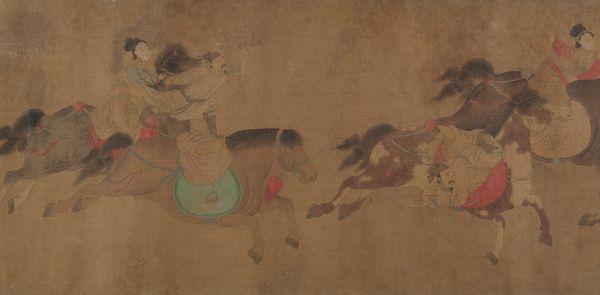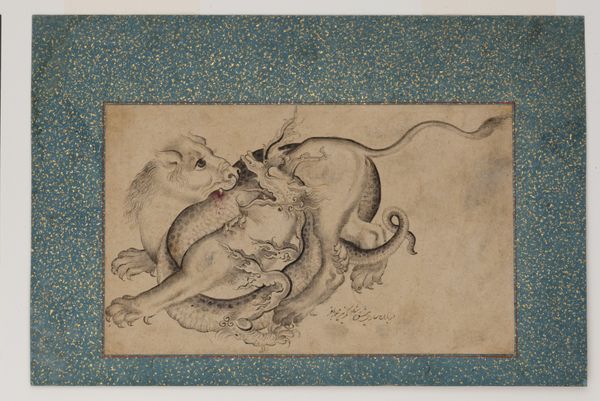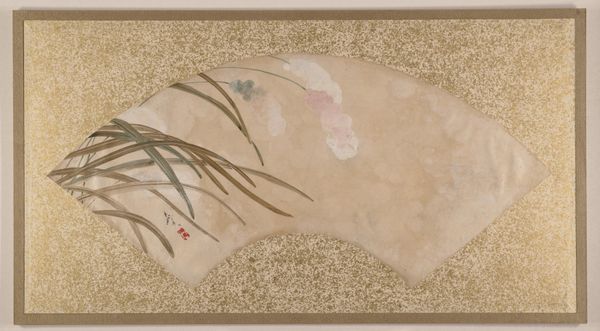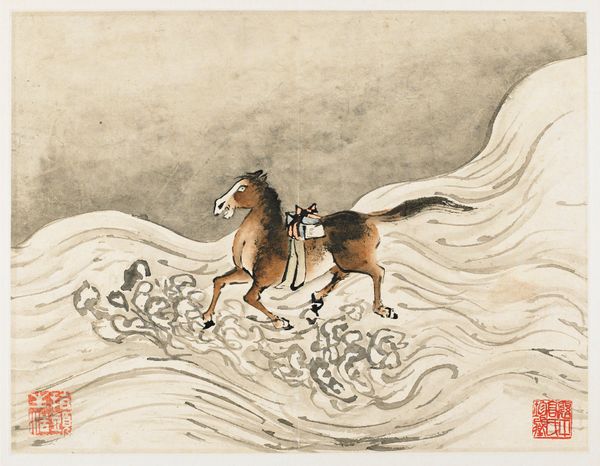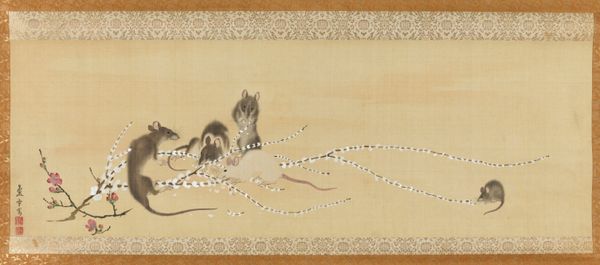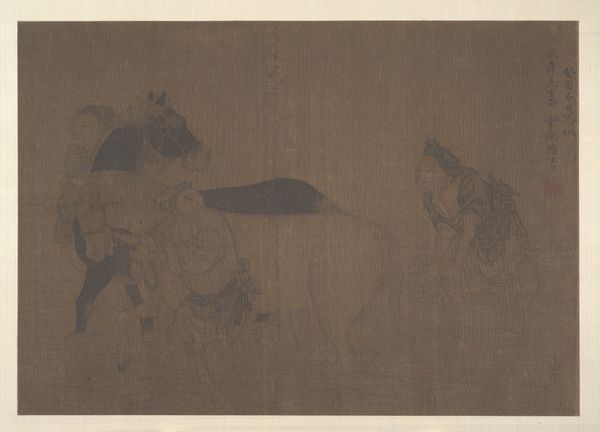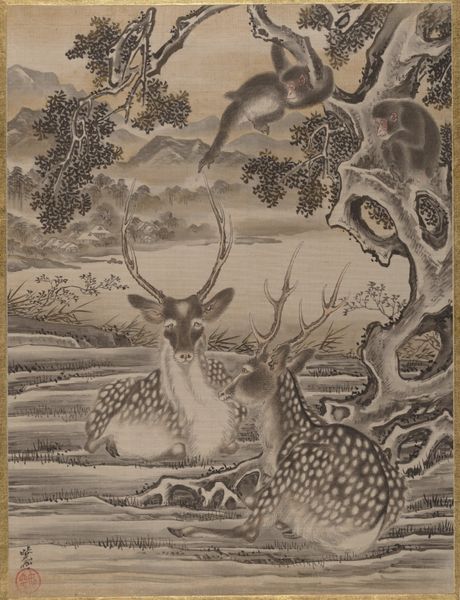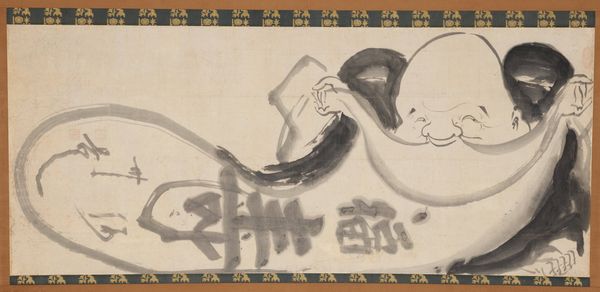
painting, watercolor
#
water colours
#
painting
#
asian-art
#
watercolor
#
orientalism
Dimensions: Overall: 13 x 23 5/8 in. (33 x 60 cm) Image: 7 1/4 x 20 1/8 in. (18.4 x 51.1 cm)
Copyright: Public Domain
Curator: This delicate watercolor piece, titled "Flowers in Gourd," was created by Shibata Zeshin sometime between 1867 and 1891. It resides here at the Metropolitan Museum of Art. Editor: The muted palette gives it a strangely ghostly quality, doesn’t it? The shimmering ground contrasted with the softly rendered gourd—it's quite arresting. Curator: Absolutely. Zeshin was renowned for his innovative approach to lacquer techniques and for blending Western and Japanese art traditions. Think about how gourds have been used as everyday containers but also elevated as decorative objects in traditional East Asian life, symbolizing longevity and prosperity. How do you think he treats materiality? Editor: He seems to deliberately obscure the process. The watercolor technique applied to silk or paper here makes the gourd appear almost like a ceramic form—a blurring of boundaries. Consider, too, how a common vegetable becomes a vessel, both materially and symbolically transforming it from something useful to something decorative and, possibly, even aspirational. Curator: Indeed. We need to remember the rigid social structures and economic shifts of the Meiji period during which this artwork was made, which saw shifts of status from different commodities, particularly lacquerwares with new imperialistic demands and taste making between what can be seen as "refined" versus "folk" material culture. In essence, Shibata questions those power relations through a synthesis of traditional artistic skill with natural objects. Editor: I'm drawn to how understated yet self-contained the image is. By focusing on a single object from the everyday world, and then rendering it through delicate, almost ethereal, application of watercolor, it shifts the value in both the production and how the artwork can be viewed by consumers. Curator: Right! It transforms not just the gourd but how we view its social significance in terms of gender and status as it gains popularity from export trade. By imbuing such objects with quiet grace, it challenges norms about what is high versus low culture and in fact the political dynamics shaping cultural norms. Editor: Looking closely at the inscription with its seal, and reflecting back to our talk of materiality, it makes me want to dive further into the materials he’s playing with here. Thanks for helping me consider those contexts! Curator: My pleasure! And the delicate touch really makes you wonder, how do we even think about power and who decides those tastes?
Comments
No comments
Be the first to comment and join the conversation on the ultimate creative platform.
